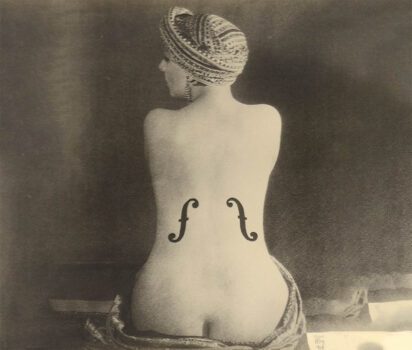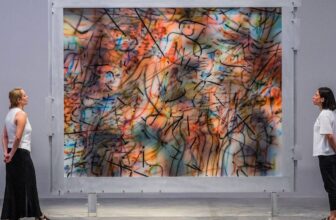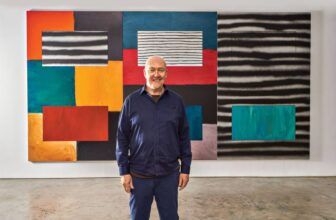What Are Man Ray’s Most Famous Paintings and Photographs
Man Ray, one of the most enigmatic and pioneering figures in 20th-century art, remains a cornerstone of avant-garde creativity. His art defied categorization, slipping effortlessly between photography, painting, film, and sculpture. Man Ray was not only an artistic chameleon but also a relentless innovator who transformed the very essence of image-making. From the experimental beauty of his “Rayographs” to the haunting elegance of Le Violon d’Ingres, Man Ray’s work continues to inspire, mystify, and provoke generations of artists and thinkers.
The Man Behind the Lens: Who Was Man Ray?
Born Emmanuel Radnitzky on August 27, 1890, in Philadelphia to Russian Jewish immigrants, Man Ray adopted his pseudonym early in his artistic career, a move emblematic of his desire to break away from societal conventions. Raised in Brooklyn, New York, Ray initially pursued painting, influenced by the Cubists and American modernists. However, his true transformation occurred in the bustling avant-garde circles of Paris during the 1920s, where he became a key figure in both the Dada and Surrealist movements.
Man Ray was a restless spirit, always moving forward, always reinventing. He once said, “I do not photograph nature. I photograph my visions.” That vision altered the trajectory of photography and modern art permanently.
What Is Man Ray Famous For?
Man Ray is most famously known for his photography, particularly for innovating new techniques and redefining the limits of the medium. While he began as a painter, he became most celebrated for his photographic portraits, fashion photography, and avant-garde experiments.
He is credited with the invention of the “Rayograph”, a type of photogram created without a camera by placing objects directly onto photographic paper and exposing it to light. The result was an abstract, ghostly image, evocative, mysterious, and thoroughly modern.
He also explored solarization, a technique developed with his muse and lover Lee Miller, where part of the photographic image is reversed in tone, lending it a surreal and otherworldly quality.
Beyond photography, Man Ray also made significant contributions to film, painting, sculpture, and even fashion. His work bridged gaps between media, making him a true Renaissance figure of the modernist era.
What Art Style Is Man Ray Associated With?
Man Ray is primarily associated with the Dada and Surrealist movements. Both movements rejected traditional aesthetics and embraced the irrational, the subconscious, and the absurd. Man Ray’s work captured the essence of these ideologies, using unusual juxtapositions, dreamlike compositions, and non-traditional materials.
In photography, he stood at the crossroads between fine art and conceptual experimentation, often creating images that blurred reality and illusion. His paintings, although lesser known, reflected similar surrealist aesthetics, distorted forms, symbolic landscapes, and irrational elements.
In this regard, Man Ray is best seen not as a specialist in any one medium but as a conceptual artist ahead of his time, concerned less with the “how” and more with the “why” of art-making.
What Are Man Ray’s Most Famous Paintings and Photographs?
Man Ray’s body of work is immense, but several iconic pieces stand out as milestones in modern art:
1. Le Violon d’Ingres (1924)
Arguably his most famous photograph, this image features his muse Kiki de Montparnasse with f-holes painted on her bare back, transforming her body into a musical instrument. It is a powerful metaphor, merging sensuality with surrealism, the body with the object.
Fun Fact: In 2022, this photo became the most expensive ever sold at auction, going for $12.4 million.
2. Glass Tears (Les Larmes, 1932)
A striking black-and-white image of a woman’s face with glass beads mimicking tears. The composition evokes artificial emotion and cinematic glamour, typical of Man Ray’s surrealist tendencies.
3. Rayographs (1921–1925)
These camera-less photographs used found objects and light to create mysterious compositions. The Rayograph revolutionized photography and embodied Dadaist ideas of chance, abstraction, and anti-art.
4. The Gift (1921)
A classic Dada sculpture, The Gift is a flatiron with nails affixed to its base, rendering it both useless and threatening. It was made in collaboration with Marcel Duchamp, another Dada luminary.
5. Cadeau (Gift, 1921)
A similar version of The Gift, Cadeau captures Dada’s irreverent humor and anarchic spirit.
6. Observatory Time: The Lovers (1936)
A painting that features giant red lips floating in the sky, modeled on the lips of Lee Miller. The image speaks to longing, surrealist eroticism, and the poetic subconscious.
What Is Man Ray’s Most Famous Picture?
Without question, Le Violon d’Ingres is Man Ray’s most famous and iconic photograph. The image encapsulates many of the artist’s obsessions, musical metaphors, eroticism, surreal transformation, and the female form.
As mentioned, the image made headlines in 2022 when it sold for $12.4 million at Christie’s, becoming the most expensive photograph ever sold. The price is a testament not only to its rarity (it was a unique print) but also to its enduring visual and conceptual power.
How Much Is Man Ray’s Art Worth?
Man Ray’s art commands millions of dollars in the contemporary market, especially his unique photographic prints and rare objects. The value of his works varies significantly based on medium, rarity, and provenance:
Photographs: High-quality, vintage prints can range from $100,000 to over $12 million, with Le Violon d’Ingres setting the top benchmark.
Paintings and Drawings: These can sell for $500,000 to several million, depending on subject matter and period.
Sculptures and Assemblages: These are rarer and can command $1 million+, especially Dada-era pieces.
Man Ray’s work has become a blue-chip investment for collectors of Surrealism, photography, and 20th-century art.
Who Was Man Ray’s Muse?
Throughout his life, Man Ray was inspired by a number of women, but Kiki de Montparnasse and Lee Miller were his most important muses.
Kiki de Montparnasse (Alice Prin)
A famous model, cabaret singer, and socialite in 1920s Paris, Kiki became the subject of many of Man Ray’s early and most erotic works. Her charismatic and bohemian spirit perfectly aligned with the avant-garde ethos of the time.
She was the model for Le Violon d’Ingres, and many of his nudes from the early ’20s showcase her figure and personality.
Lee Miller
More than a muse, Lee Miller was also a formidable artist in her own right. An American model turned photographer, she studied under Man Ray and co-discovered the solarization technique. Their passionate and often tumultuous relationship yielded some of the most experimental work of his career.
Miller would go on to become a renowned war photographer, but in Paris, she was both collaborator and inspiration to Man Ray.
Who Was Man Ray’s Lover?
Man Ray had numerous lovers throughout his life, often blending romance with art. His most well-documented relationships were with Kiki de Montparnasse, Lee Miller, and later, Juliet Browner, a dancer and model whom he married in 1946.
His relationships often overlapped with his creative practice, muses were rarely just subjects; they were collaborators, provocateurs, and confidantes. Man Ray saw in women not only beauty but the mystery and irrationality that Surrealism so celebrated.
Where Are Man Ray’s Artworks Located Today?
Man Ray’s works are held in major museums and private collections around the world. Some of the most notable locations include:
1. Centre Pompidou, Paris
One of the largest collections of Man Ray’s works, including photographs, sculptures, and experimental films.
2. Museum of Modern Art (MoMA), New York
Holds a strong collection of Man Ray’s Rayographs and photographic portraits.
3. The Getty Museum, Los Angeles
Known for its extensive photography collection, including vintage prints by Man Ray.
4. Tate Modern, London
Hosts works from Man Ray’s Surrealist period and Rayographs.
5. Philadelphia Museum of Art
As his birthplace city, Philadelphia hosts an important body of work and documentation.
6. Man Ray Trust and Archives
The artist’s estate, run by The Man Ray Trust, holds many original works and is responsible for cataloging and authenticating his pieces.
Additionally, many of his films, such as Emak-Bakia and L’Étoile de Mer, are preserved in film archives and shown at major film retrospectives and art exhibitions.
Why Does Man Ray Still Matter?
Man Ray matters because he dared to reimagine what art could be. He broke boundaries, not just between media, but between the conscious and subconscious, the sensual and intellectual, the serious and the absurd.
His contributions to photography changed how we perceive the medium, elevating it to a form of conceptual and surrealist expression rather than just documentation.
His spirit of play, innovation, and rebellion continues to influence not just photographers, but filmmakers, fashion designers, painters, and digital artists. From David Lynch to Cindy Sherman, echoes of Man Ray’s influence can be felt throughout contemporary art.
Man Ray once said, “An original is a creation motivated by desire. Any reproduction of an original is motivated by necessity.” That desire, for freedom, experimentation, and transcendence, was the heartbeat of his entire life.
Whether photographing the curve of a woman’s back, manipulating light into strange forms, or sculpting household objects into bizarre new meanings, Man Ray remained committed to the idea of transformation, of art, of perception, and of life itself.
Even today, long after his death in 1976, his work continues to resonate. His images haunt, inspire, and challenge us, proving that true avant-garde art never ages, it only grows more vital.




